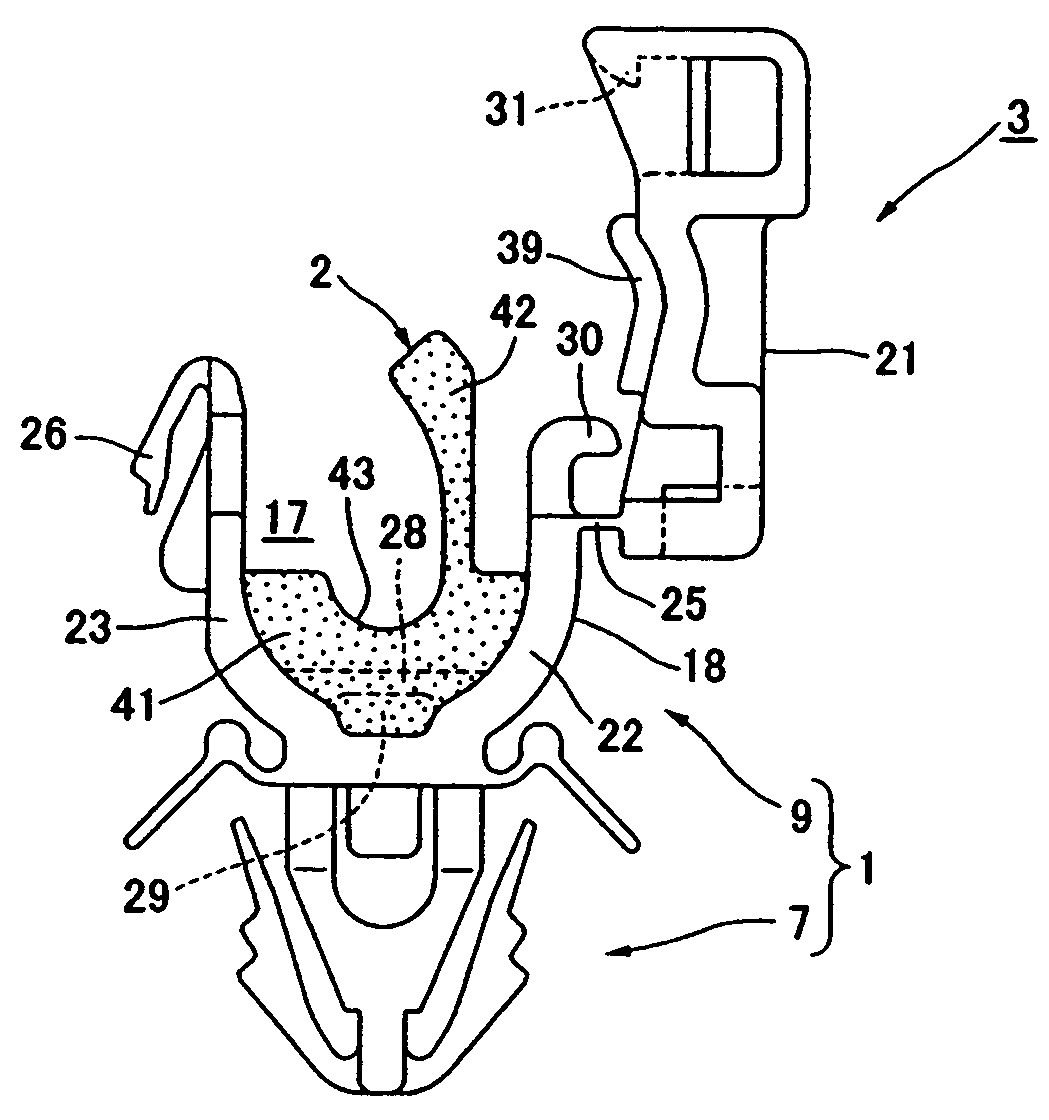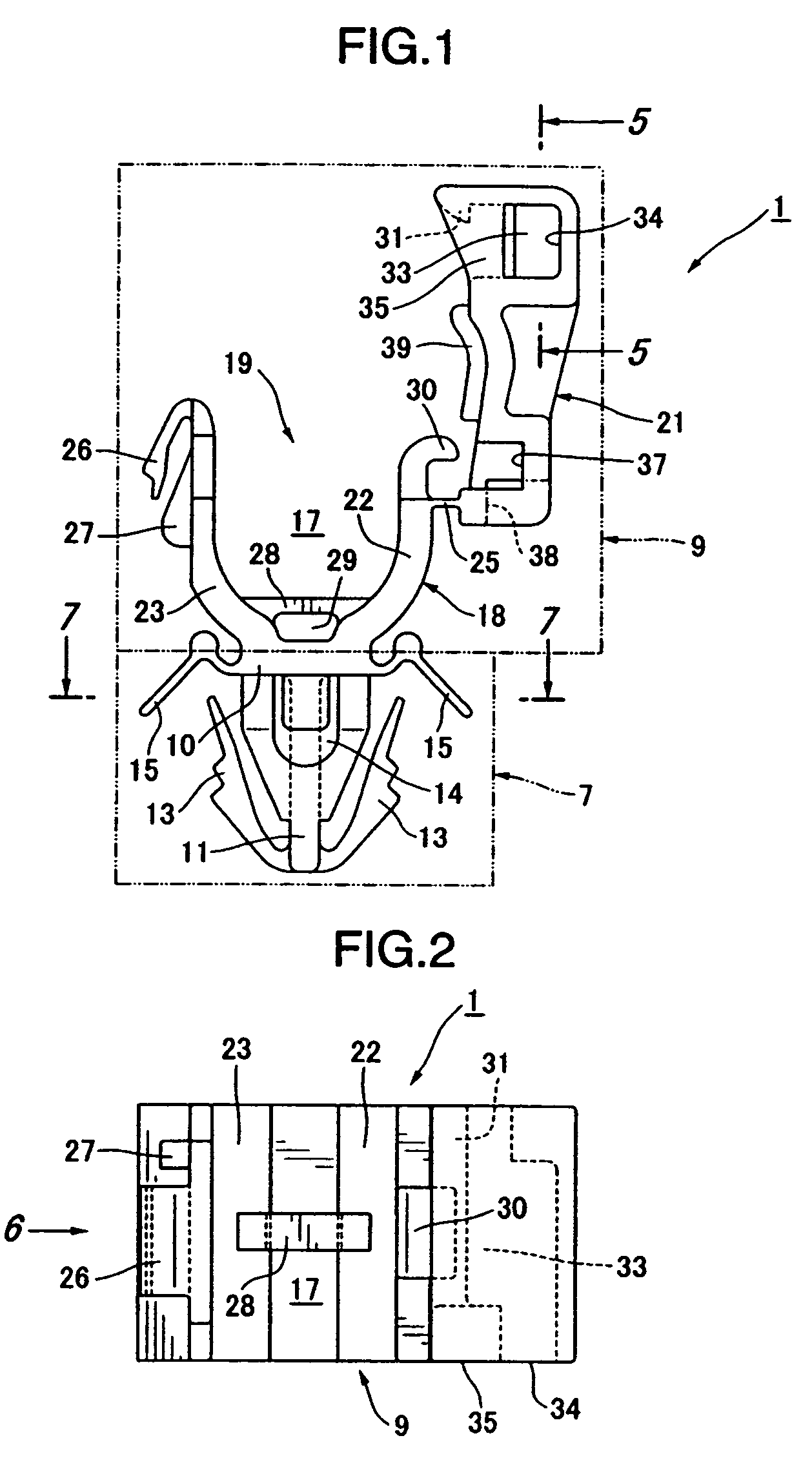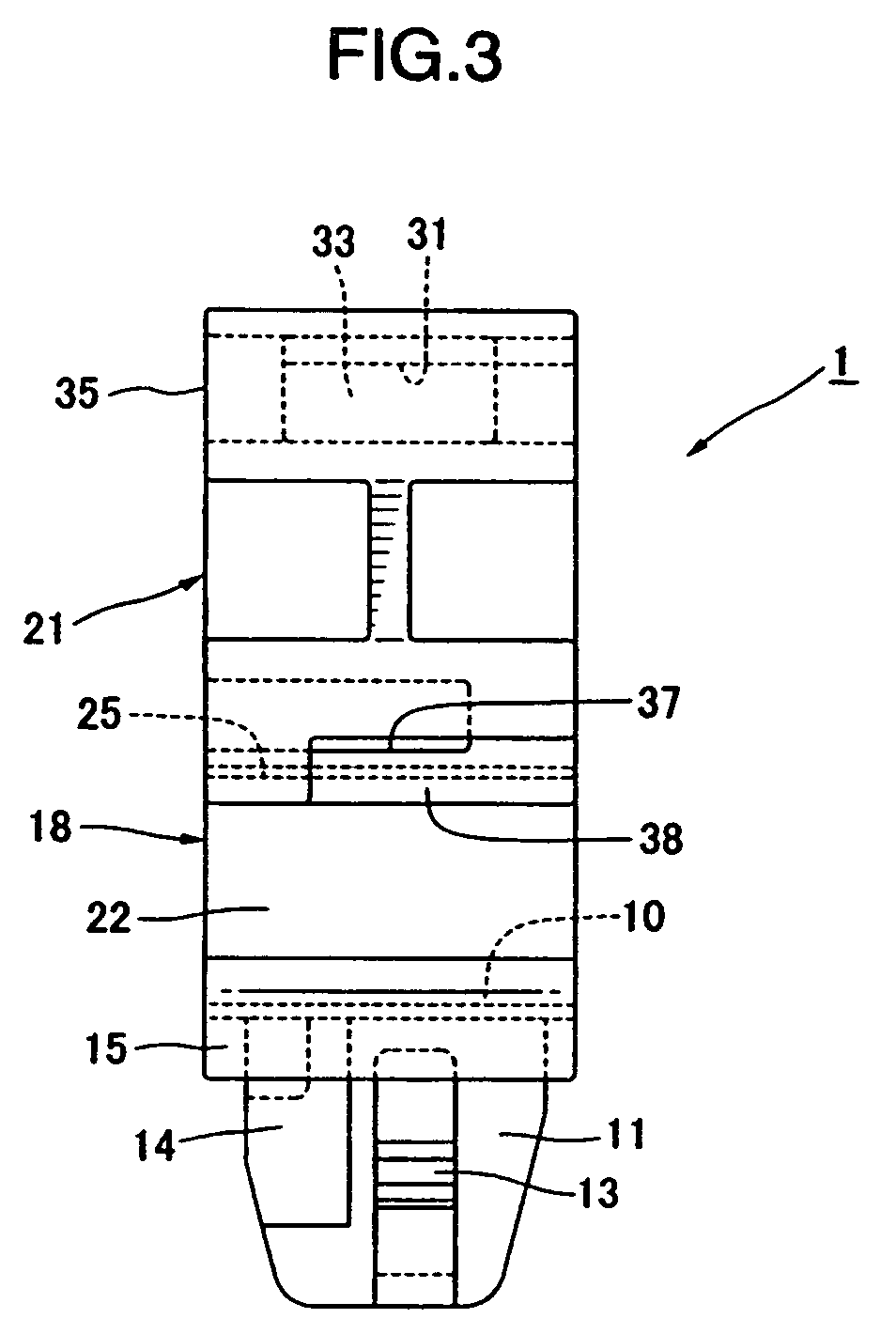Cable clamp
a technology of cable clamping and clamping rod, which is applied in the direction of manufacturing tools, machine supports, building scaffolds, etc., can solve the problems of unfavorable protection of cable protection members, unfavorable protection of cables, and inability to fix cables to body panels or the like, etc., to achieve convenient attaching operation, minimize space occupied, and convenient positioning
- Summary
- Abstract
- Description
- Claims
- Application Information
AI Technical Summary
Benefits of technology
Problems solved by technology
Method used
Image
Examples
Embodiment Construction
[0034]With reference to the drawings, a cable clamp for clamping a cable, such as a cable of an ABS (Anti-lock Breaking System), according to an embodiment of the present invention will now be described. FIGS. 1 to 12 show a cable clamp according to a first embodiment of the present invention, wherein FIGS. 1 to 8 show a clamp 1, as a primary mold product, made of hard synthetic resin material and having no protection member thereon, and FIGS. 9 and 10 show a cable clamp 3 having a protection member, according to the first embodiment of the present invention. The cable clamp 3 is a secondary mold product (the final product) in which a flexible protection member 2 made of soft resin is formed on a predetermined position of the clamp 1 as the primary product. FIGS. 11 and 12 show an operation of holding a cable 5 to the cable clamp 3 and fixing the cable clamp with the cable to a workpiece such as a body panel 6 of an automobile.
[0035]First, with reference to FIGS. 1 to 8, the primary...
PUM
 Login to View More
Login to View More Abstract
Description
Claims
Application Information
 Login to View More
Login to View More - R&D
- Intellectual Property
- Life Sciences
- Materials
- Tech Scout
- Unparalleled Data Quality
- Higher Quality Content
- 60% Fewer Hallucinations
Browse by: Latest US Patents, China's latest patents, Technical Efficacy Thesaurus, Application Domain, Technology Topic, Popular Technical Reports.
© 2025 PatSnap. All rights reserved.Legal|Privacy policy|Modern Slavery Act Transparency Statement|Sitemap|About US| Contact US: help@patsnap.com



